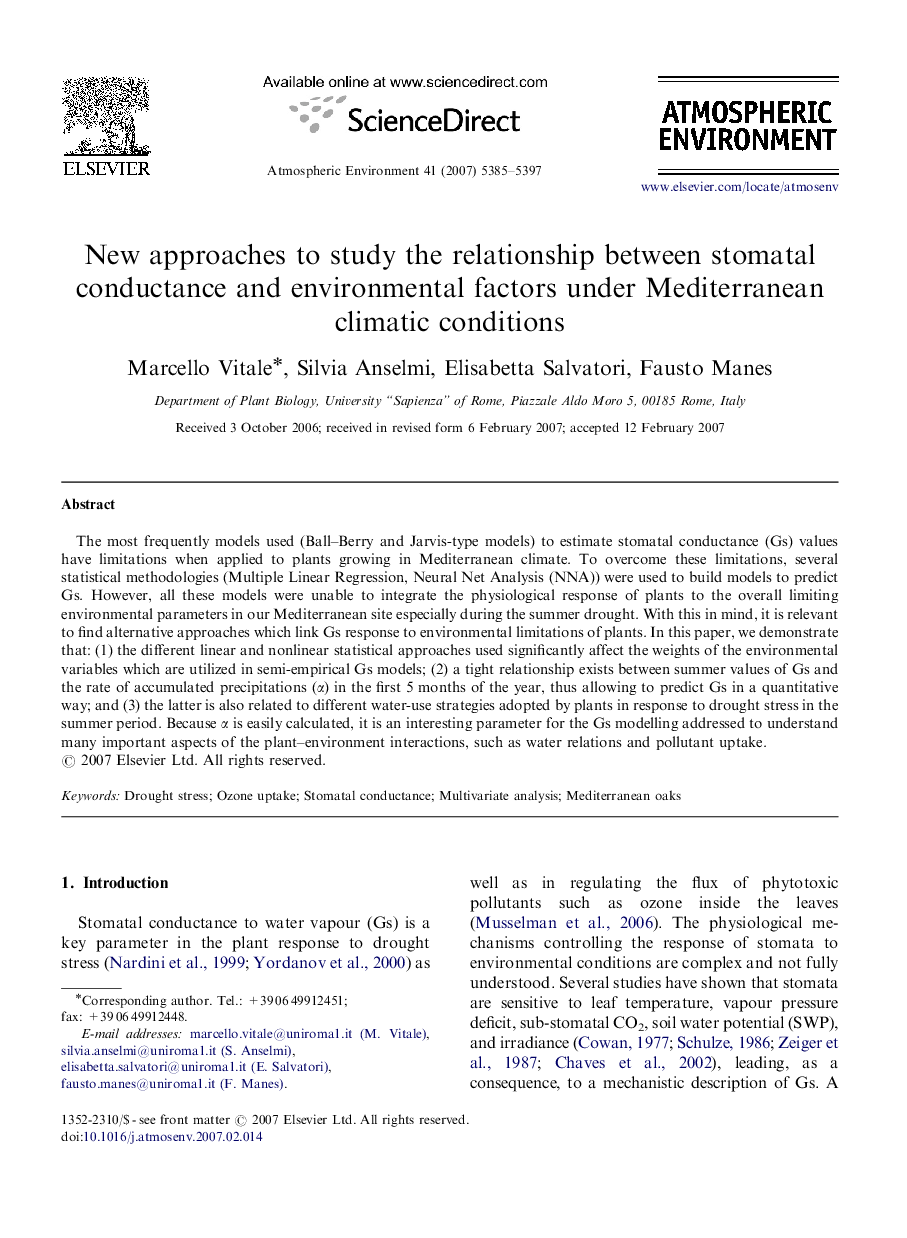| Article ID | Journal | Published Year | Pages | File Type |
|---|---|---|---|---|
| 4443446 | Atmospheric Environment | 2007 | 13 Pages |
The most frequently models used (Ball–Berry and Jarvis-type models) to estimate stomatal conductance (Gs) values have limitations when applied to plants growing in Mediterranean climate. To overcome these limitations, several statistical methodologies (Multiple Linear Regression, Neural Net Analysis (NNA)) were used to build models to predict Gs. However, all these models were unable to integrate the physiological response of plants to the overall limiting environmental parameters in our Mediterranean site especially during the summer drought. With this in mind, it is relevant to find alternative approaches which link Gs response to environmental limitations of plants. In this paper, we demonstrate that: (1) the different linear and nonlinear statistical approaches used significantly affect the weights of the environmental variables which are utilized in semi-empirical Gs models; (2) a tight relationship exists between summer values of Gs and the rate of accumulated precipitations (α) in the first 5 months of the year, thus allowing to predict Gs in a quantitative way; and (3) the latter is also related to different water-use strategies adopted by plants in response to drought stress in the summer period. Because α is easily calculated, it is an interesting parameter for the Gs modelling addressed to understand many important aspects of the plant–environment interactions, such as water relations and pollutant uptake.
